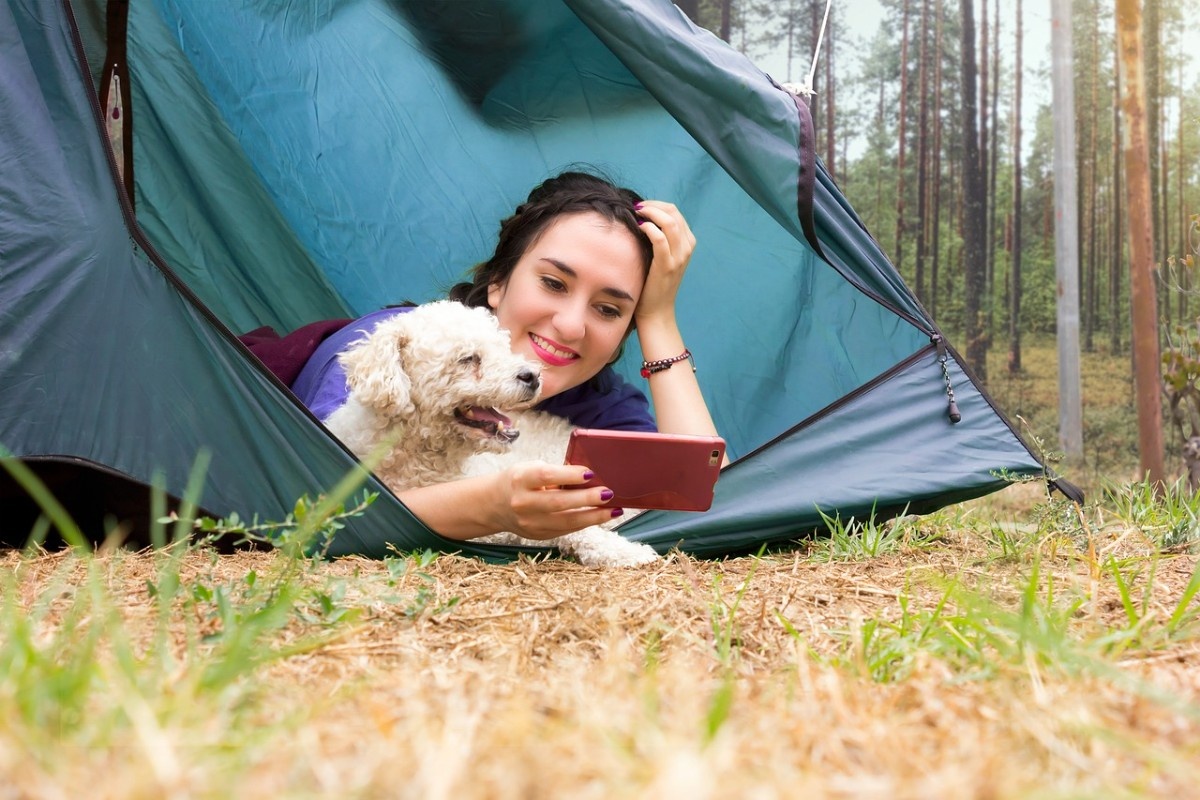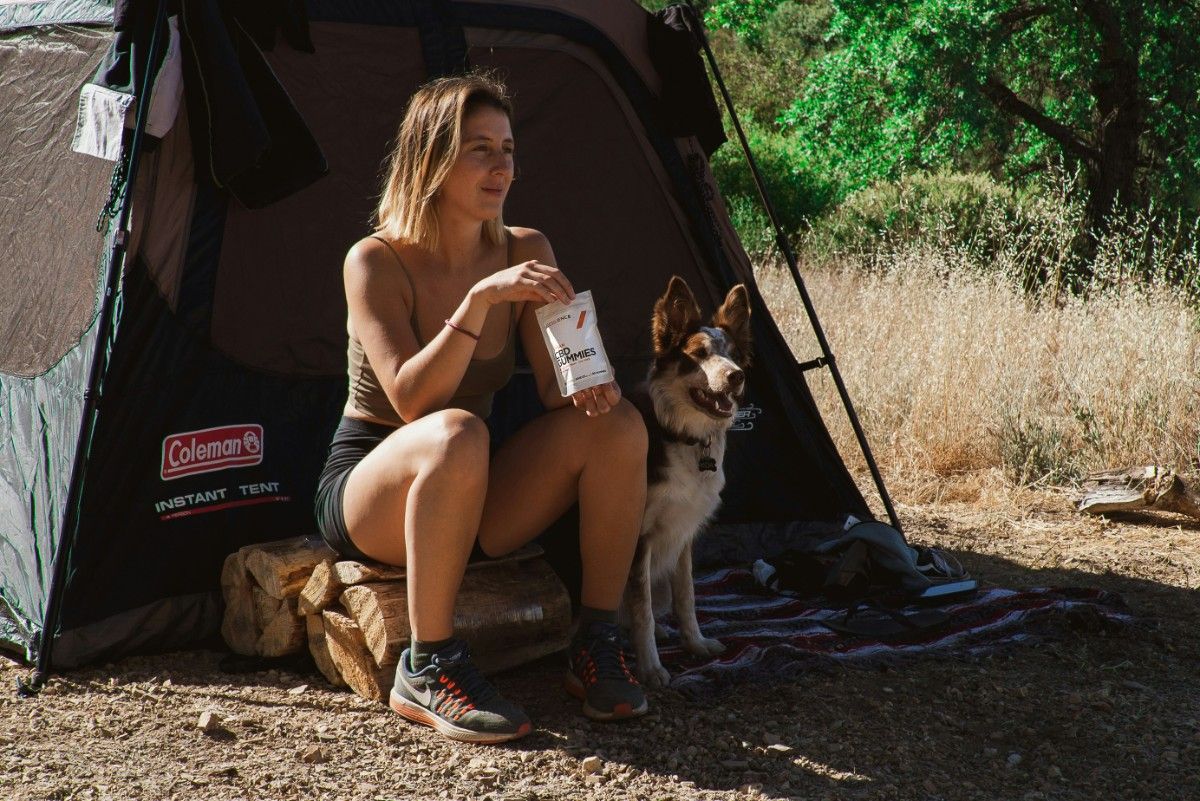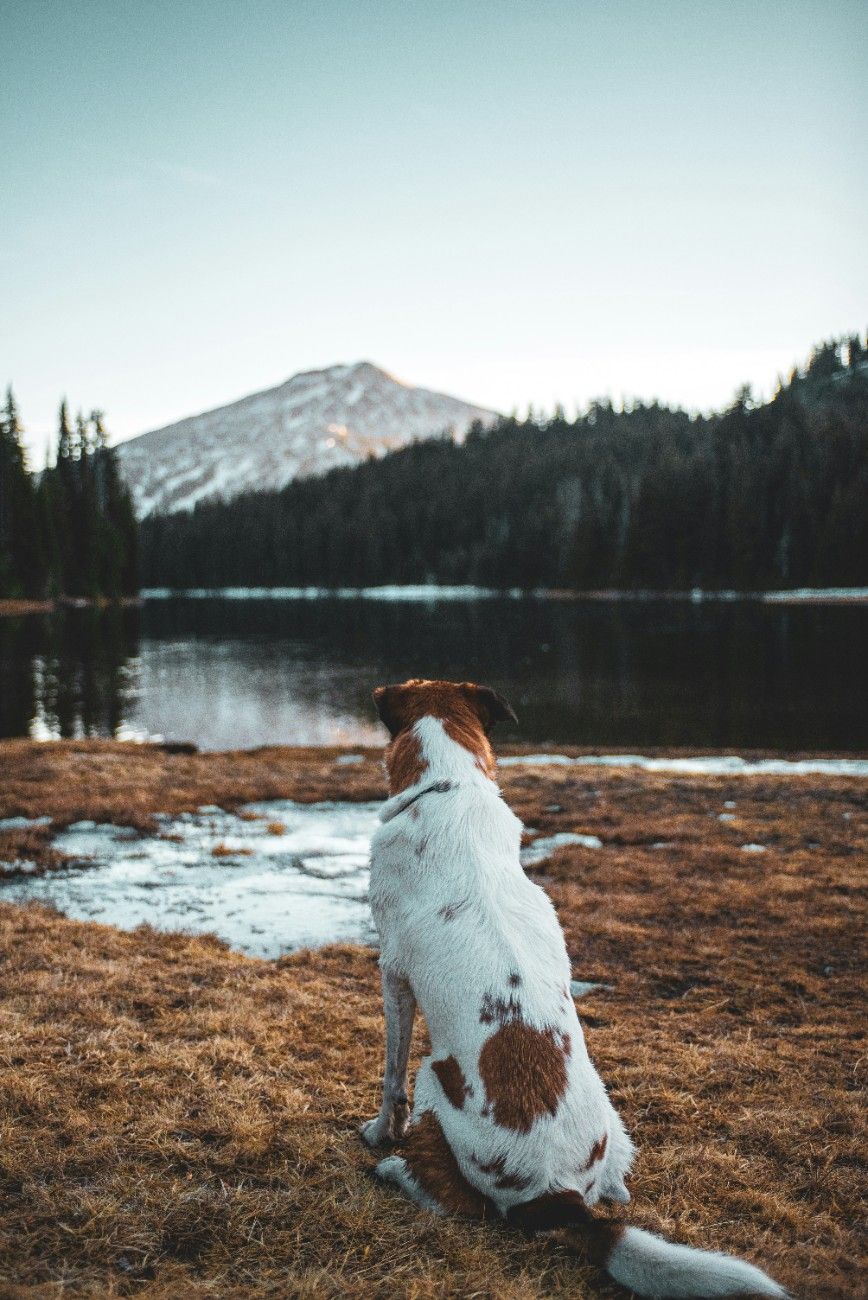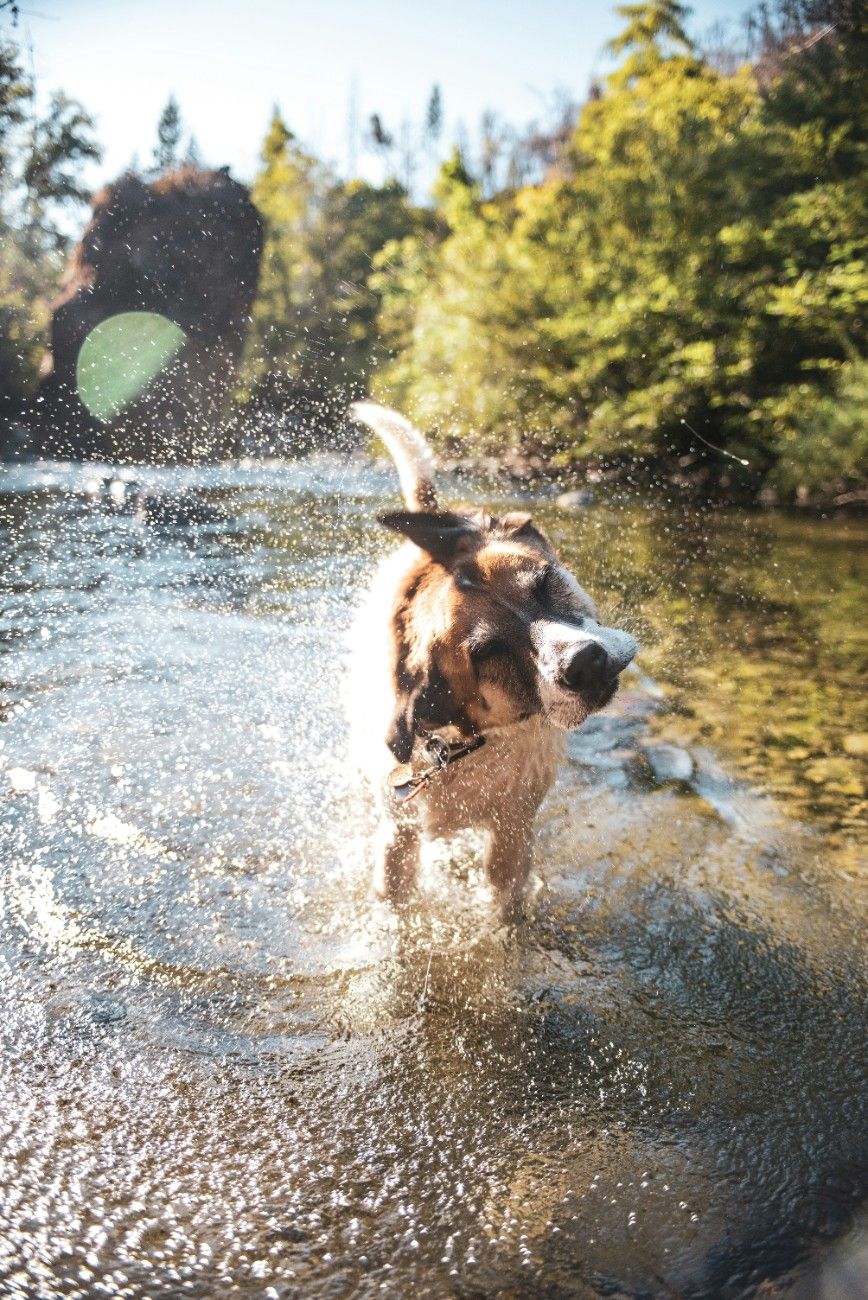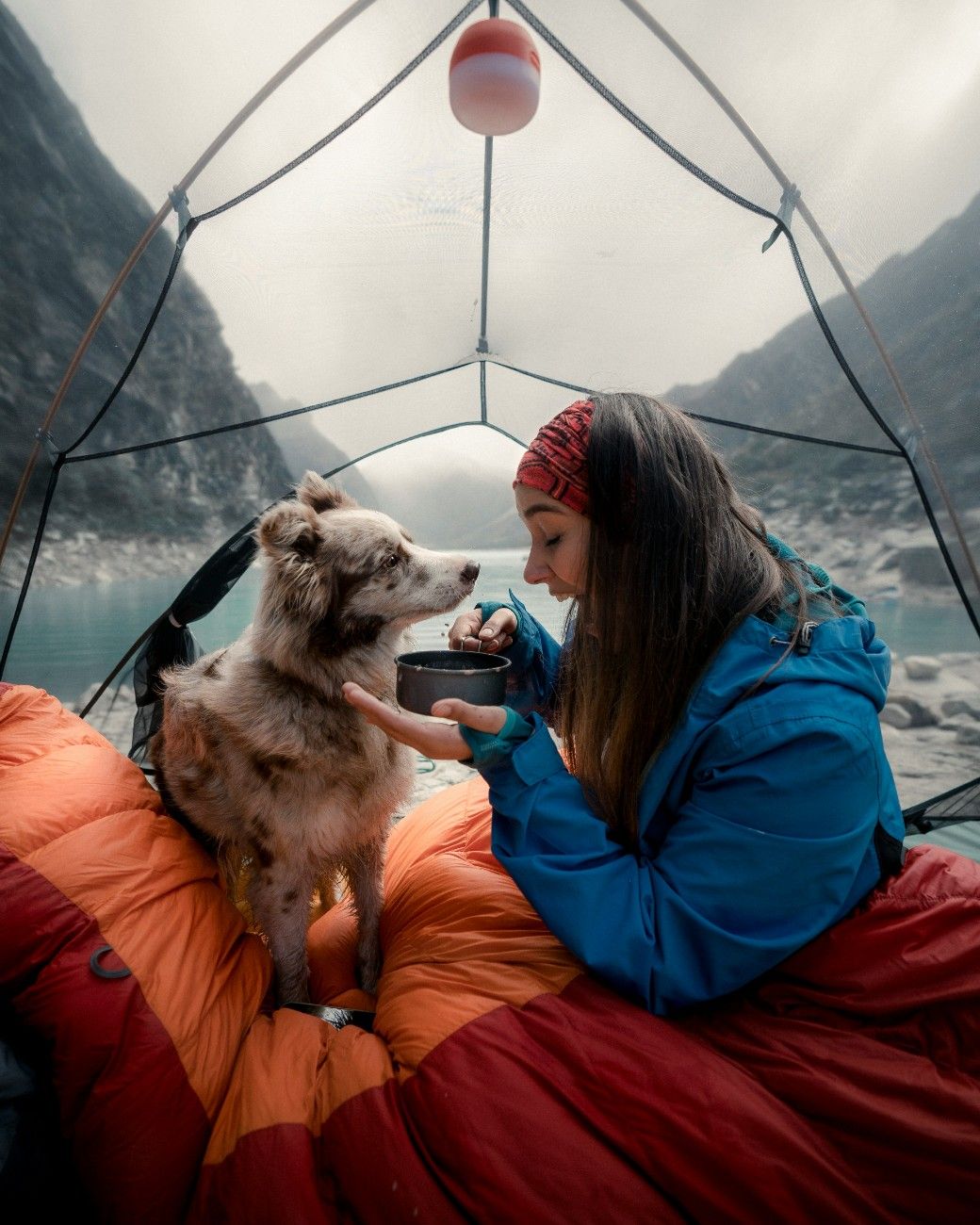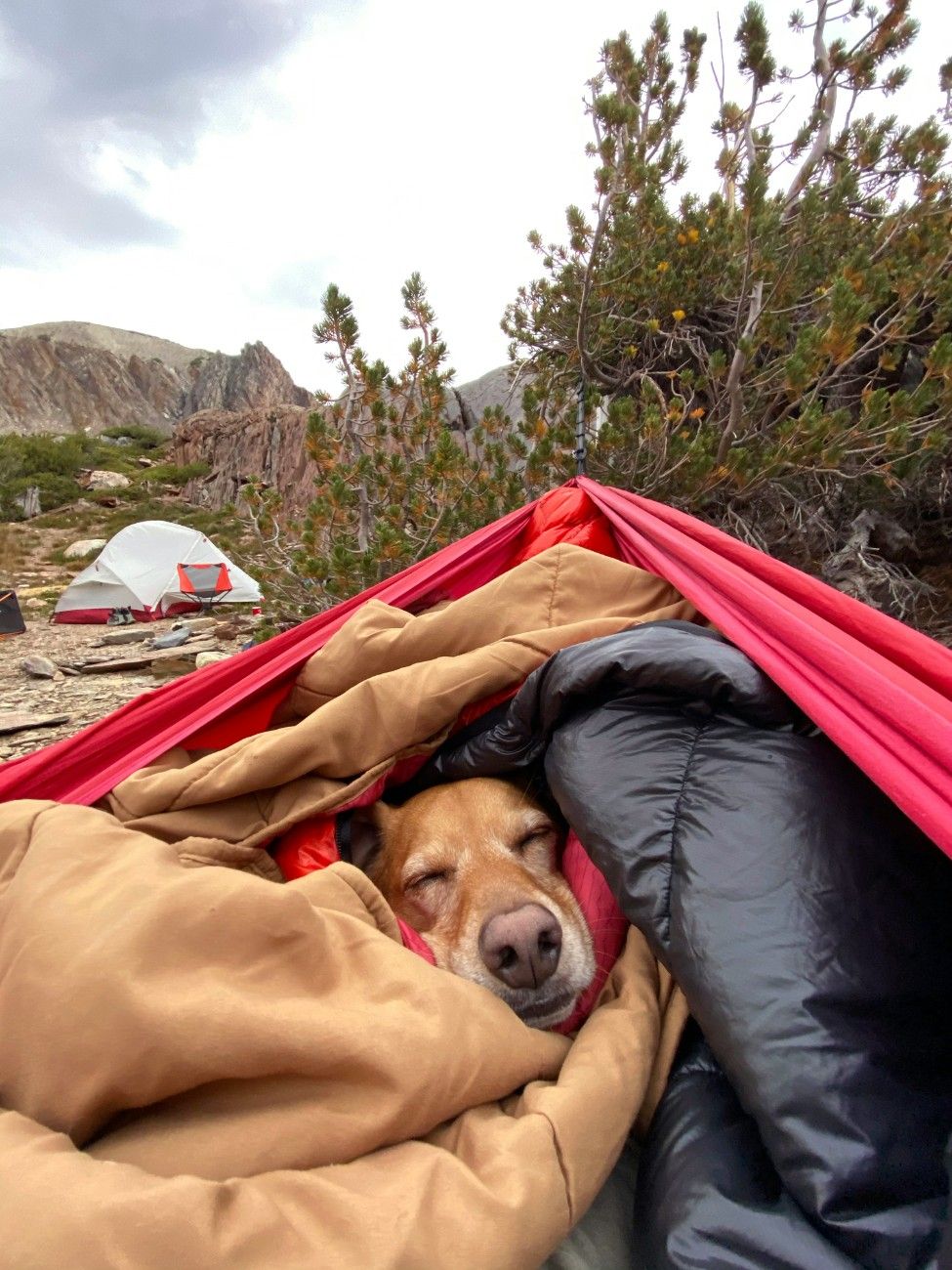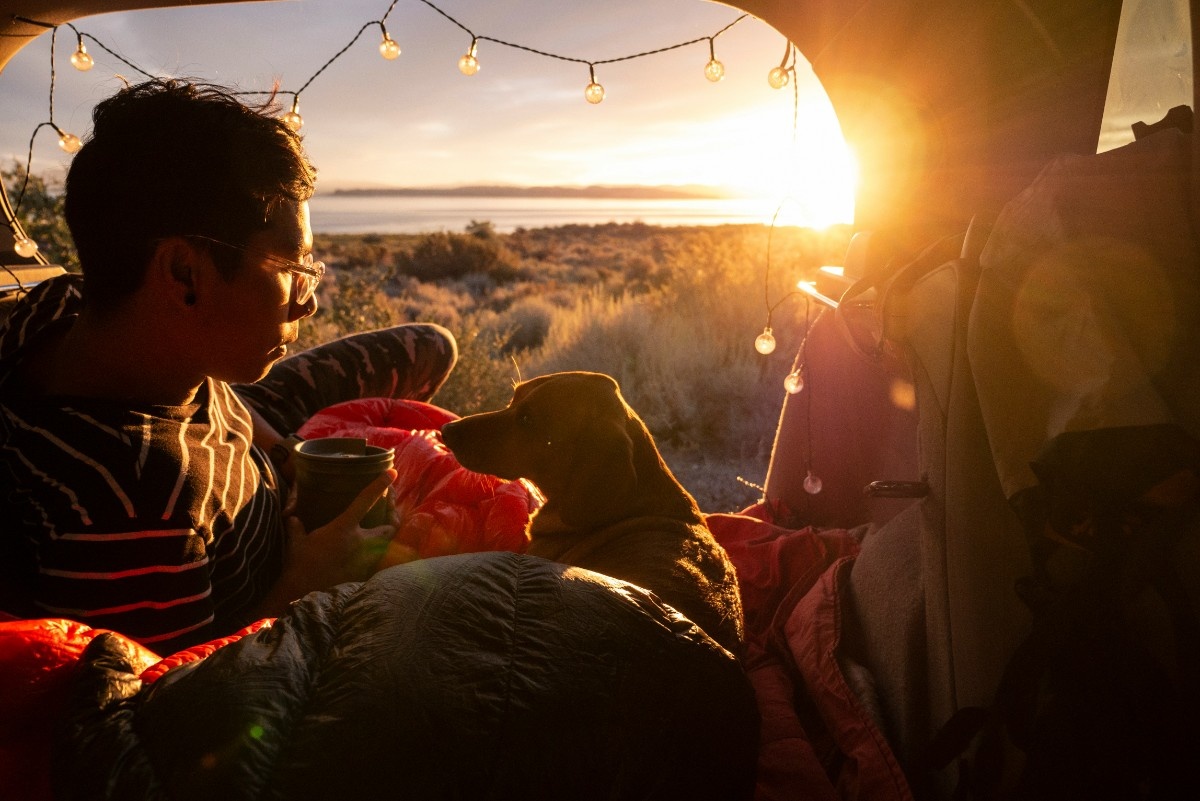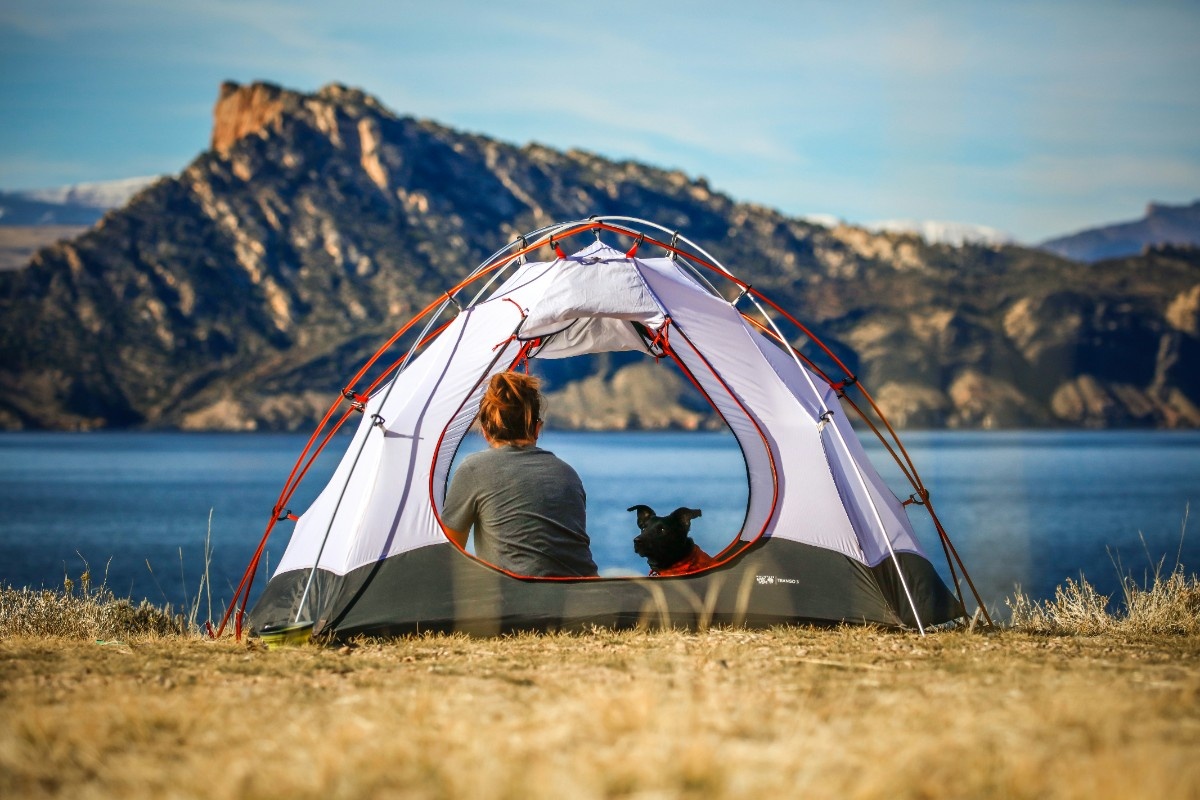The Ultimate Guide to Camping with Dogs
Introduction to Camping with Dogs: Essential Considerations
Assessing Your Dog's Suitability for Camping
Before embarking on a camping adventure with your canine companion, it's crucial to assess whether your dog is suited for the experience. Not all dogs will enjoy or thrive in a camping environment, so it's important to consider various factors. Start by evaluating your dog's temperament.
Dogs that are easily stressed, anxious, or prone to excessive barking might find the unfamiliar camping environment challenging. Consider your dog's age and health status. Younger, more energetic dogs might adapt more easily to the outdoor lifestyle, while older dogs or those with health issues may require extra care and consideration. Breeds also play a role; some dogs are naturally more suited to outdoor activities than others. For example, working breeds like Labrador Retrievers or Australian Shepherds often excel in outdoor settings, while brachycephalic breeds like Pugs or Bulldogs might struggle with temperature regulation and physical exertion. Assess your dog's fitness level and gradually build up their endurance if needed.
Take your dog on shorter outdoor excursions or camping trips in your backyard to gauge their reaction to sleeping outdoors and being in a tent. Observe how they respond to new environments, sounds, and experiences. If your dog shows signs of stress or discomfort, work on desensitisation and positive reinforcement training before planning a full camping trip.
Consider your dog's training level as well. Basic obedience commands like "sit," "stay," and "come" are essential for keeping your dog under control in an unfamiliar environment. If your dog's recall isn't reliable, focus on improving this skill before your trip. Remember, a well-behaved dog will not only ensure a more enjoyable experience for you but also for other campers and wildlife. Lastly, consult with your veterinarian to ensure your dog is up-to-date on vaccinations and preventative treatments for parasites like fleas and ticks, which are often prevalent in camping areas.
Understanding Camping Regulations and Etiquette
When planning a camping trip with your dog, it's essential to familiarise yourself with the regulations and etiquette surrounding dogs in camping areas. Many campsites have specific rules regarding pets, and understanding these in advance can help ensure a smooth and enjoyable experience. Start by researching dog-friendly camping areas in your desired location. Not all campsites allow dogs, and those that do often have restrictions on the number of dogs allowed per site or specific areas where dogs are permitted. Some sites may have breed-specific restrictions, so always check in advance if you have a breed that's sometimes subject to restrictions.
Leash requirements are another crucial aspect to consider. Many campsites require dogs to be on a leash at all times, while others may have designated off-leash areas. Understanding and respecting these rules is vital for the safety of your dog, wildlife, and other campers.
Familiarise yourself with local wildlife regulations as well. In some areas, dogs may need to be kept on a leash to protect local fauna, especially during breeding seasons for ground-nesting birds. Be aware of potential encounters with wildlife and know how to handle these situations safely.
Waste management is another critical aspect of camping etiquette. Always clean up after your dog and dispose of waste properly. Some campsites provide specific facilities for this, while in more remote areas, you may need to bury waste or pack it out. Respect quiet hours and be mindful of your dog's barking, especially at night.
If your dog tends to bark at unfamiliar sounds, consider bringing aids like white noise machines to help mask external noises. Lastly, be considerate of other campers who may not be comfortable around dogs. Keep your dog under control and don't allow them to approach other campsites or people without permission.
Preparing Your Dog for the Camping Experience
Preparing your dog for a camping trip involves more than just packing the right gear. It requires mental and physical preparation to ensure your furry friend is ready for the adventure ahead. Start by gradually introducing your dog to the concept of camping. Set up your tent in your backyard or a local park and encourage your dog to explore it. Use positive reinforcement techniques, offering treats and praise when your dog shows interest or enters the tent willingly. This helps create positive associations with the camping environment.
Practice sleeping in the tent with your dog, even if it's just for short periods initially. This allows your dog to get used to the confined space and the different sounds they might hear while camping. If you plan to use any specific camping gear for your dog, such as a portable bed or feeding station, introduce these items at home first. Let your dog become familiar with them in a comfortable environment before using them on your trip.
Physical preparation is equally important. In the weeks leading up to your camping trip, gradually increase your dog's exercise routine. This helps build their stamina for the increased activity levels often associated with camping trips. Include activities that mimic what you'll be doing while camping, such as longer walks, hikes, or even swimming if that's part of your plans. Work on reinforcing basic obedience commands, especially recall. A reliable recall is crucial when camping, as it can help prevent your dog from chasing wildlife or wandering off. Practice these commands in various environments with increasing levels of distraction to ensure your dog will respond even in the exciting camping setting.
Lastly, consider your dog's dietary needs. If you plan to change their food or feeding schedule during the camping trip, start making these adjustments gradually before you leave. This can help prevent digestive upset during your trip.
Essential Gear for Camping with Dogs
Choosing the Right Leash and Collar System
Selecting the appropriate leash and collar system is crucial for ensuring your dog's safety and comfort while camping. The ideal setup will depend on your dog's size, strength, and behaviour, as well as the activities you plan to undertake.
For general camping use, a sturdy, adjustable leash is essential. Look for leashes made from durable materials like nylon or leather, with a length that allows for both close control and some freedom of movement. A length of 4-6 feet is typically suitable for most camping situations. Consider a leash with reflective elements for improved visibility during nighttime potty breaks or early morning walks.
For hiking or more rugged terrain, a hands-free leash that attaches around your waist can be beneficial, allowing you to maintain control of your dog while keeping your hands free for balance or carrying gear.
In terms of collars, ensure you have a well-fitting collar with clear identification tags. The collar should be snug enough that it won't slip over your dog's head, but loose enough that you can comfortably fit two fingers between the collar and your dog's neck.
For camping, consider a waterproof or quick-drying collar to prevent skin irritation if your dog gets wet. Some campers prefer using a harness instead of or in addition to a collar, especially for dogs that tend to pull on the leash. A well-fitted harness can provide better control and reduce strain on your dog's neck. Look for harnesses with a front-clip option, which can help discourage pulling.
For added security, particularly in areas with wildlife, consider a tactical-style harness with a handle on the back. This can be useful for quickly controlling your dog in emergency situations. Don't forget to include a spare leash and collar in your camping kit, in case of damage or loss. A long training lead can also be useful for allowing your dog more freedom to explore while still maintaining control in areas where off-leash dogs are not permitted.
Essential Camping Gear for Your Dog's Comfort and Safety
Ensuring your dog's comfort and safety while camping requires some specialised gear. One of the most important items is a dog camping bed or mat. This provides insulation from the cold ground and gives your dog a comfortable place to rest. Look for beds that are durable, water-resistant, and easy to clean. Some dogs may prefer raised beds for better airflow, while others might be more comfortable on padded mats. Consider the climate you'll be camping in and choose accordingly.
For colder weather, you might need to invest in a dog sleeping bag or a dog-specific camping blanket for extra warmth. A portable water bowl is another essential item. Collapsible silicone bowls are lightweight and easy to pack, making them ideal for camping trips. Bring enough to have separate bowls for food and water.
A portable water filter or purification system can ensure a safe water supply for both you and your dog throughout your trip. For your dog's safety, a well-stocked first aid kit is crucial. Include items such as bandages, antiseptic wipes, tweezers for tick removal, and any specific medications your dog might need. Familiarise yourself with basic canine first aid procedures before your trip.
If you're camping in an area with wildlife, consider bringing a bear bell or whistle to alert animals of your presence and reduce the chance of surprise encounters. Depending on the climate and terrain, you might need to invest in protective gear for your dog. This could include booties to protect paw pads from hot surfaces or sharp rocks, a cooling vest for hot weather, or a waterproof jacket for rainy conditions. A stake and tie-out system can be useful for securing your dog at the campsite, but never leave your dog unattended when tied out. Lastly, don't forget to bring plenty of waste bags for cleaning up after your dog, helping to minimise your impact on the environment.
Nutrition and Hydration Gear for Camping Dogs
Proper nutrition and hydration are crucial for dogs during camping trips, and having the right gear can make managing your dog's food and water much easier. Start with a sturdy, sealable container for storing your dog's food. This not only keeps the food fresh but also prevents attracting wildlife to your campsite. Dry food is typically the most convenient option for camping, but if your dog eats wet food, consider portion-sized containers for easy serving. Always pack a little extra food in case your trip runs longer than expected.
For water, collapsible water bottles designed for dogs can be very convenient. These often come with attached bowls for easy drinking on the go. In addition to portable bowls mentioned earlier, consider a larger, more stable bowl for use at the campsite. Stainless steel or hard plastic options are durable and easy to clean. If you're camping in an area where water sources might be scarce, bring a dedicated water container for your dog to ensure they stay hydrated throughout the trip.
In hot weather, you might want to include some frozen dog treats or a cooling mat to help regulate your dog's body temperature. For longer hikes, a dog backpack can allow your dog to carry their own water and food. However, introduce the backpack gradually and ensure it's not too heavy – a general rule is that dogs shouldn't carry more than 10-15% of their body weight. If you're camping in bear country, it's essential to have a bear-resistant food container to store all food, including your dog's. This helps protect both your supplies and local wildlife. Lastly, don't forget to pack any supplements or medications your dog regularly takes, and consider bringing some dog-safe electrolyte powder to add to their water in case of dehydration.
Choosing Dog-Friendly Camping Sites in the UK
Researching and Identifying Dog-Friendly Campsites
When planning a camping trip with your dog in the UK, thorough research is essential to find the perfect dog-friendly campsite. Start by utilising online resources specifically designed for pet owners. Websites and apps like Pitchup, Cool Camping, and Campsites.co.uk often have filters for dog-friendly sites, making your search easier. These platforms usually provide detailed information about each campsite's pet policies, including any restrictions or additional fees for dogs.
Social media can also be a valuable resource; look for camping groups on Facebook or follow hashtags on Instagram related to dog-friendly camping in the UK. Fellow campers often share their experiences and recommendations, providing real-world insights that you might not find on official websites. Don't overlook traditional guidebooks either, as many now include sections on pet-friendly accommodations and campsites.
When researching, pay close attention to the specific amenities offered for dogs. Some campsites go above and beyond by providing dog wash stations, dedicated exercise areas, or even dog-sitting services. These extras can greatly enhance your camping experience with your furry friend.
Consider the location of the campsite in relation to dog-friendly attractions and walking routes. A site near national parks, beaches, or forests that welcome dogs can offer more opportunities for outdoor adventures with your pet. However, be aware that some popular areas may have seasonal restrictions for dogs, especially on beaches or in nature reserves during bird nesting seasons. It's also worth looking into the general atmosphere of the campsite.
Some sites are more family-oriented and may be bustling with activity, while others offer a quieter, more secluded experience. Think about which environment would suit your dog best. If your dog is easily excited or prone to barking, a more isolated pitch might be preferable. Lastly, don't hesitate to contact the campsite directly with any questions. Most site owners or managers are happy to provide detailed information about their dog policies and facilities. This direct communication can also give you a sense of how welcoming and accommodating the site is towards dogs and their owners.
Popular Dog-Friendly Camping Regions in the UK
The UK offers a wealth of beautiful regions that are particularly well-suited for camping with dogs. One of the most popular areas is the Lake District in northwest England. Known for its stunning landscapes of lakes and mountains, the Lake District National Park is incredibly dog-friendly, with numerous campsites that welcome four-legged guests. Many of the walking trails and even some pubs in the area are dog-friendly, making it an ideal destination for outdoor enthusiasts and their pets.
In Wales, the Pembrokeshire Coast National Park is another excellent choice for dog-friendly camping. With its spectacular coastline and abundance of beaches, many of which allow dogs year-round, it's a paradise for water-loving pooches. The region boasts numerous campsites that cater to dogs, ranging from basic pitches to more luxurious glamping options.
For those seeking a mix of countryside and coastal experiences, Devon and Cornwall in southwest England offer diverse camping opportunities. These counties are known for their dog-friendly beaches, charming villages, and extensive networks of footpaths, including sections of the South West Coast Path. Many campsites in this region not only allow dogs but provide specific amenities for them, such as dog-washing facilities or designated exercise areas.
Scotland's Highlands and Islands present a more rugged camping experience that many dogs and their owners love. The expansive wilderness, lochs, and mountains provide endless opportunities for exploration. The Scottish Outdoor Access Code generally allows for responsible access with dogs, making wild camping a possibility in many areas. However, it's crucial to check local regulations and practice Leave No Trace principles.
For those preferring to stay closer to urban areas, the New Forest in Hampshire offers a unique camping experience. Known for its free-roaming ponies and cattle, the New Forest has numerous dog-friendly campsites. However, it's important to keep dogs under control here due to the presence of wildlife and livestock.
In Eastern England, the North Norfolk Coast is gaining popularity for dog-friendly camping. With its expansive beaches, many of which allow dogs year-round, and charming coastal towns, it's an excellent choice for a more relaxed camping trip. Remember that while these regions are generally dog-friendly, specific sites and attractions within them may have varying policies. Always check the most up-to-date information before planning your trip.
Evaluating Campsite Facilities and Policies for Dogs
When choosing a dog-friendly campsite, it's crucial to evaluate the facilities and policies to ensure they meet both your and your dog's needs. Start by examining the campsite's specific rules regarding dogs. Some sites may have restrictions on the number of dogs allowed per pitch, breed-specific policies, or rules about where dogs are allowed within the campsite. Check if dogs are permitted inside any on-site accommodations like yurts or camping pods if you're considering these options.
Leash policies are another important factor to consider. Some campsites require dogs to be on a leash at all times, while others may have designated off-leash areas. If your dog enjoys some freedom to roam, look for sites with more flexible policies or specific dog exercise areas.
Consider the layout of the campsite and the type of pitches available. Some dogs might be more comfortable in a secluded area away from the main thoroughfare, while others might enjoy being in the thick of things. Check if the site offers specific dog-friendly pitches that might be larger or located in more suitable areas for pets.
Evaluate the campsite's amenities from a dog owner's perspective. Are there water points easily accessible for refilling your dog's water bowl? Is there a designated area for washing dogs after muddy walks? Some high-end dog-friendly sites even offer amenities like dog showers or dog-sitting services.
The proximity of the campsite to dog-friendly walks or beaches is another crucial factor. While a site might allow dogs, if the surrounding area has limited options for dog walks, it might not be the best choice for an active pet. Look for sites that provide information about local dog-friendly attractions and walking routes.
It's also worth considering the general cleanliness and maintenance of the site. A well-maintained campsite is not only more pleasant for you but also safer for your dog, reducing the risk of them picking up litter or accessing potentially harmful areas. Lastly, read reviews from other dog owners who have stayed at the site. They can provide valuable insights into the real-world experience of camping there with a dog, including any unexpected challenges or highlights that might not be apparent from the official campsite information.
Tips for a Successful Camping Trip with Your Dog
Pre-Trip Preparation and Packing Essentials
Proper preparation is key to ensuring a successful camping trip with your dog. Start by creating a comprehensive packing list tailored to your dog's needs. Beyond the basic camping gear, include items specific to your dog such as their regular food, treats, medications, and any comfort items like a favourite toy or blanket. It's wise to pack more food than you think you'll need in case your trip extends unexpectedly.
Ensure your dog's identification tags are up-to-date and securely attached to their collar. Consider getting your dog microchipped if they aren't already, as this can be crucial for reuniting with your pet if they get lost in an unfamiliar area.
Prepare a doggy first-aid kit, including items like bandages, antiseptic wipes, tick removal tools, and any specific medications your dog might need. Familiarise yourself with basic canine first aid procedures before your trip. If you're camping in an area known for ticks or other parasites, ensure your dog is up-to-date on preventative treatments. Consult with your veterinarian about any additional precautions you should take based on your camping destination.
Plan your route and itinerary with your dog in mind. Research dog-friendly trails, beaches, and attractions near your campsite. Be aware of any local wildlife that might pose a threat to your dog and know how to handle potential encounters. If you're planning any water activities, pack appropriate gear like a dog life jacket.
For longer trips or those involving multiple stops, it's helpful to create a folder with copies of your dog's medical records, vaccination certificates, and a recent photo. This can be invaluable in case of emergencies or if you need to leave your dog with a sitter unexpectedly. Lastly, in the days leading up to your trip, gradually introduce your dog to any new gear you've purchased for the camping trip, such as a new bed or harness. This allows them to become familiar with these items in a comfortable environment before using them in the unfamiliar camping setting.
Setting Up a Dog-Friendly Campsite
Creating a safe and comfortable campsite for your dog is crucial for a successful camping trip. Upon arrival at your chosen site, take some time to thoroughly inspect the area for any potential hazards such as sharp objects, toxic plants, or holes that your dog could step into. Clear the area of any litter or debris that could be harmful if ingested.
When setting up your tent, consider your dog's needs. If your dog will be sleeping inside the tent with you, ensure there's enough space for them to move around comfortably. Set up their bed or blanket in a cosy corner of the tent. If your dog is more comfortable sleeping outside, create a sheltered area near the tent entrance. This could be a small tarp or a dog-specific tent.
Establish a designated area for your dog's food and water bowls. Keep this area clean and store food securely to avoid attracting wildlife. Create a comfortable lounging area for your dog near your campsite seating. This could be as simple as laying out a blanket in a shaded spot. Having a familiar space can help your dog feel more at ease in the new environment. If campsite rules allow, consider setting up a long lead or tie-out system to give your dog some freedom to explore while keeping them secure. However, never leave your dog unattended when tied out.
Familiarise your dog with the boundaries of your campsite. Take them on a short walk around the perimeter on a leash, allowing them to sniff and explore. This can help them understand the limits of their new temporary home.
If your campsite has a fire pit, ensure it is secure and your dog can't access it. Even when not in use, fire pits can retain heat and pose a burn risk. Lastly, set up a cleaning station for your dog. This could include a brush for removing burrs or twigs from their coat, and towels for drying them off after swims or rainy walks. Having these items easily accessible will help keep your dog clean and comfortable throughout your camping trip.
Managing Your Dog's Behaviour and Safety While Camping
Managing your dog's behaviour and ensuring their safety is paramount for a successful camping trip. Start by maintaining as much of your dog's regular routine as possible. Try to feed and walk them at similar times to their usual schedule. This consistency can help reduce stress and make your dog feel more comfortable in the new environment. Keep your dog on a leash when exploring the campsite or surrounding areas, unless you're in a designated off-leash area. This not only keeps your dog safe but also prevents them from disturbing wildlife or other campers.
Be extra vigilant about your dog's recall command. Even well-trained dogs can become distracted by new smells and sights, so it's important to reinforce this command regularly throughout your trip. Never leave your dog unattended at the campsite. If you need to leave for any reason, ensure your dog is secure inside your vehicle or with a trusted person.
Be aware of the local wildlife in your camping area and take appropriate precautions. In areas with large predators, make noise while hiking to avoid surprise encounters. Keep food, including dog food, properly stored to avoid attracting animals to your campsite.
Monitor your dog for signs of stress or fatigue. Camping can be an exciting but tiring experience for dogs, especially if they're not used to so much outdoor activity. Ensure they have plenty of opportunities for rest and quiet time.
Be mindful of the weather conditions. In hot weather, avoid strenuous activities during the hottest parts of the day and ensure your dog has access to shade and plenty of water. In cold weather, consider a dog coat for breeds with short fur. Watch for signs of heatstroke or hypothermia and know how to respond. If your dog shows any signs of illness or injury, don't hesitate to cut your trip short and seek veterinary care. It's better to err on the side of caution when you're in a remote location.
Respect quiet hours at the campsite. If your dog tends to bark at unfamiliar noises, consider using a white noise machine or app to mask external sounds, especially at night. Lastly, always clean up after your dog. Carry plenty of waste bags and dispose of them properly according to campsite rules. By being a responsible dog owner, you help ensure that dog-friendly camping areas remain open and accessible for future trips.
Navigating Challenges: Troubleshooting Common Issues When Camping with Dogs
Dealing with Anxiety and Stress in Dogs While Camping
Camping can be an exciting but potentially stressful experience for dogs, especially if they're not accustomed to outdoor adventures. Recognising and managing anxiety in your dog is crucial for a successful camping trip. Common signs of stress in dogs include excessive panting, pacing, whining, trembling, or attempts to hide. If you notice these behaviours, it's important to address them promptly.
Start by creating a safe, familiar space for your dog at the campsite. Bring items from home that your dog associates with comfort, such as their bed, favourite toys, or a blanket with familiar scents. These can provide a sense of security in the new environment. Maintain a calm demeanour yourself, as dogs often pick up on their owner's emotions. If you remain relaxed and positive, it can help your dog feel more at ease.
Stick to your dog's regular routine as much as possible, including meal times and walks. This consistency can be reassuring for dogs in unfamiliar situations. Consider using calming aids if your dog is particularly anxious. These can include pheromone sprays, calming collars, or even anxiety wraps. However, it's best to introduce these before your trip to ensure your dog responds well to them.
For dogs that are sensitive to noise, the unfamiliar sounds of a campsite can be stressful. Using white noise or calming music can help mask these sounds, especially at night. You might also consider camping in a more secluded area of the campsite if possible.
If your dog is showing signs of severe anxiety, it's important to have a backup plan. This might mean cutting the trip short or finding alternative accommodation. It's always better to prioritise your dog's wellbeing over sticking to your original plans.
Gradual exposure can be key in helping dogs overcome camping anxiety. Consider starting with shorter trips or even backyard camping to help your dog acclimate to sleeping outdoors and being in a tent. Reward calm behaviour with treats and praise to create positive associations with camping. Remember that some dogs may never be completely comfortable with camping, and that's okay. It's important to respect your dog's limits and choose activities that you both enjoy.
Managing Encounters with Wildlife and Other Campers' Pets
When camping with your dog, encounters with wildlife and other campers' pets are often inevitable. Managing these interactions safely is crucial for the wellbeing of your dog, local wildlife, and fellow campers. Start by keeping your dog on a leash or under strict voice control at all times, unless in designated off-leash areas. This not only protects wildlife but also prevents your dog from running off if startled by an animal.
Educate yourself about the local wildlife in your camping area. Be particularly aware of any dangerous animals like bears, snakes, or aggressive deer. Know how to respond if you encounter these animals and teach your dog a solid "leave it" command to prevent them from approaching wildlife.
When hiking, make noise to alert wildlife of your presence and reduce the chance of surprise encounters. Never let your dog chase or harass wildlife, even small animals like squirrels or rabbits. This can be dangerous for your dog and is stressful for the wild animals. It's also illegal in many areas.
Be cautious around water sources, as these are often gathering places for wildlife. Keep your dog away from animal carcasses or droppings, which can carry diseases. When it comes to interactions with other campers' pets, always ask permission before allowing your dog to approach. Not all dogs are friendly or comfortable with greetings, and some may be reactive on leash.
Keep your dog close and under control when passing other campers with pets. If your dog is not comfortable around other dogs, choose a more isolated campsite if possible. Be respectful of quiet hours and control any barking, which can disturb both wildlife and other campers.
Properly store all food, including dog food and treats, to avoid attracting wildlife to your campsite. Clean up any food scraps promptly. If your dog has a high prey drive, be extra vigilant in areas with small wildlife. Consider using a basket muzzle during hikes if your dog is prone to chasing animals. This allows them to pant and drink while preventing them from catching wildlife.
Remember, respecting wildlife and other campers is not just good etiquette; it's often the law. Many natural areas have strict rules about dog behaviour to protect local ecosystems. By managing these encounters responsibly, you help ensure that these areas remain open and welcoming to dogs and their owners in the future.
Handling Health and Safety Issues in Remote Camping Locations
Camping in remote locations with your dog can be a wonderful experience, but it also presents unique health and safety challenges. Being prepared for potential issues and knowing how to handle them is crucial.
Start by ensuring your dog is in good health before the trip. A pre-trip vet check can catch any underlying issues that might be exacerbated by the stress or physical demands of camping. Ensure all vaccinations are up to date and consider additional preventative treatments based on your destination, such as tick prevention for wooded areas.
Pack a comprehensive first aid kit specifically for your dog. This should include items like bandages, antiseptic wipes, tweezers for tick removal, and any medications your dog takes regularly. Familiarise yourself with basic canine first aid procedures, including how to check vital signs, clean wounds, and perform CPR if necessary. Consider taking a pet first aid course before your trip.
Be aware of the signs of common camping-related health issues in dogs, such as heat exhaustion, hypothermia, and dehydration. Know how to respond to these conditions. For heat exhaustion, move your dog to a cool area, offer water, and use damp towels to lower their body temperature. For hypothermia, warm your dog gradually with blankets and your own body heat.
Always ensure your dog has access to clean water and monitor their hydration levels, especially in hot weather or during strenuous activities. Bring a portable water filter or purification tablets to ensure a safe water supply. Watch for signs of altitude sickness if camping at high elevations, particularly if your dog isn't accustomed to such altitudes. Symptoms can include lethargy, loss of appetite, and difficulty breathing. If you notice these signs, descend to a lower elevation immediately.
Be cautious of natural hazards like sharp rocks, thorny plants, or hot surfaces that could injure your dog's paw pads. Consider using dog boots for protection, especially in rough terrain or extreme temperatures.
Check your dog regularly for ticks, burrs, or small wounds, particularly after hikes through wooded or overgrown areas. Remove any ticks promptly and clean any wounds thoroughly.
If camping in an area with venomous snakes, know how to identify them and what to do in case of a snake bite. Generally, keep the affected area below heart level and seek immediate medical attention. Do not attempt to suck out the venom or apply a tourniquet.
Before your trip, research the location of the nearest veterinary clinic or animal hospital to your campsite. Have their contact information readily available. In very remote areas, consider carrying a satellite phone or emergency beacon for quick communication in case of emergencies.
Lastly, trust your instincts. If your dog seems unwell or you're unsure about their condition, it's better to end the trip early and seek professional help than to risk a serious health issue in a remote location. Remember, your dog's safety and wellbeing should always be the top priority when camping in remote areas.
Exploring Dog-Friendly Activities and Adventures While Camping
Hiking and Trail Exploration with Your Dog
Hiking is one of the most popular activities to enjoy with your dog while camping, offering a chance to explore nature together and provide excellent exercise. Before setting out on any hike, assess your dog's fitness level and choose trails that match their abilities. Start with shorter, easier hikes and gradually work up to more challenging ones as your dog builds endurance.
Always check if the trail is dog-friendly, as some protected areas may have restrictions. When preparing for a hike, pack essential items for your dog including water, collapsible bowls, treats, waste bags, and a basic first aid kit. If you're planning a longer hike, consider a dog backpack where your furry friend can carry some of their own supplies. Ensure the pack is properly fitted and doesn't exceed 10-15% of your dog's body weight.
During the hike, keep your dog on a leash unless in designated off-leash areas. This protects local wildlife and prevents your dog from wandering off or encountering hazards. Take frequent breaks, especially on warm days, to allow your dog to rest and hydrate.
Be aware of your dog's body language and watch for signs of fatigue or overheating. Hot pavement or rocky terrain can be tough on your dog's paw pads, so consider using dog boots for protection, especially in extreme temperatures or on rough surfaces. Always check your dog's paws after a hike for any cuts or thorns.
Practice good trail etiquette by yielding to other hikers, keeping your dog under control, and cleaning up any waste. Many trails follow a "pack it in, pack it out" policy, so be prepared to carry out any waste bags until you reach a proper disposal site. Be mindful of local wildlife and never allow your dog to chase animals or disturb nesting areas.
In some regions, you may need to be alert for larger predators like bears or mountain lions. Know how to handle potential encounters and consider carrying bear spray in areas where it's recommended. After the hike, check your dog thoroughly for ticks, burrs, or any small injuries. Offer plenty of water and allow time for rest and recovery. Remember, the goal is to create an enjoyable experience for both you and your dog, so always prioritise their comfort and safety over reaching a specific destination or covering a certain distance.
Water Activities and Beach Exploration with Dogs
Many dogs love water, and camping near lakes, rivers, or beaches can provide excellent opportunities for aquatic adventures. However, it's important to approach water activities with caution and proper preparation.
First, assess your dog's swimming ability. Not all dogs are natural swimmers, and some breeds may struggle more than others in the water. If your dog is new to swimming, start in shallow, calm water and consider using a dog life jacket for added safety. Even strong swimmers can benefit from life jackets in unfamiliar or rough waters.
When visiting beaches, check local regulations as some may have restrictions on dogs during certain seasons or times of day. Be aware of potential hazards like strong currents, submerged objects, or dangerous marine life. Always supervise your dog closely when they're in or near water.
If you're planning activities like kayaking or stand-up paddleboarding with your dog, introduce them to the equipment gradually before your trip. Practice getting on and off the craft in a safe environment. Ensure your dog has a secure place to sit or stand and consider using a non-slip mat for better traction.
For beach activities, be mindful of the temperature of the sand, which can be much hotter than the air and can burn your dog's paw pads. Provide shade and plenty of fresh water to prevent dehydration.
Be cautious about letting your dog drink from natural water sources, which may contain harmful bacteria or parasites. Bring enough fresh water for both of you. After any water activities, rinse your dog off with fresh water if possible, paying particular attention to their ears to prevent infections. Check for any cuts or scrapes that may have occurred during water play.
If you're in a coastal area, be aware of tide times and never leave your dog unattended near the water. Some dogs may be tempted to chase seabirds or other wildlife, so keep them under close control. Engage your dog in beach activities like fetch with floating toys or digging in designated areas if allowed. However, always clean up any holes your dog digs before leaving the beach.
Remember that not all dogs enjoy water activities, and some may find large bodies of water intimidating. Never force your dog into the water if they seem reluctant. Instead, let them explore the shoreline at their own pace, rewarding calm behaviour near the water. By approaching water activities with care and respect for your dog's preferences, you can create fun and safe aquatic adventures during your camping trip.
Camping-Friendly Dog Sports and Games
Incorporating dog sports and games into your camping trip can provide mental stimulation and physical exercise for your furry companion, enhancing the overall camping experience. One popular activity is canine nose work, which taps into your dog's natural scenting abilities. Hide treats or toys around your campsite and encourage your dog to find them. This game can be adapted to different skill levels and provides excellent mental stimulation. Start with easy hiding spots and gradually increase the difficulty as your dog becomes more proficient.
Another engaging activity is agility training using natural obstacles found at your campsite. Use fallen logs for jumps, create weave poles with sticks, or use large rocks for platforming exercises. Always ensure the natural obstacles are safe and stable before encouraging your dog to interact with them. Remember to keep sessions short and fun, using plenty of praise and rewards.
Frisbee or ball games can be great in open areas, providing excellent exercise and bonding time. However, be mindful of other campers and only engage in these activities in appropriate, designated areas. For a more low-key activity, try teaching your dog new tricks or practicing obedience training in the novel environment of your campsite. The new sights, sounds, and smells provide natural distractions that can help reinforce your dog's training. Work on commands like "stay" or "come" with the added challenge of the camping environment.
If you're camping near a suitable body of water, dock diving can be a fun activity for water-loving dogs. Start by encouraging your dog to retrieve a floating toy from shallow water and gradually move to deeper areas if your dog is comfortable. Always prioritise safety and use a dog life jacket if necessary.
For a calming activity, especially in the evening, try "camping yoga" with your dog. Simple stretches and poses can help both you and your dog relax after a day of adventures. Many dogs naturally join in when they see their owners stretching. Remember to always watch your dog's body language during any activity. If they seem tired, stressed, or uninterested, it's time to take a break or try something else.
The key is to find activities that both you and your dog enjoy, enhancing your camping experience and strengthening your bond. Lastly, don't forget that sometimes the best activity is simply relaxing together, enjoying the sights and sounds of nature. Allow time for your dog to engage in natural behaviours like sniffing and exploring (safely and under supervision), as these can be highly rewarding for them. By incorporating a mix of physical activities, mental challenges, and relaxation time, you can ensure a well-rounded and enjoyable camping experience for both you and your canine companion.
Related Articles

Let us know you agree to cookies
We use marketing, analytical and functional cookies as well as similar technologies to give you the best experience. Third parties, including social media platforms, often place tracking cookies on our site to show you personalised adverts outside of our website.
We store your cookie preferences for two years and you can edit your preferences via ‘manage cookies’ or through the cookie policy at the bottom of every page. For more information, please see our cookie policy.
